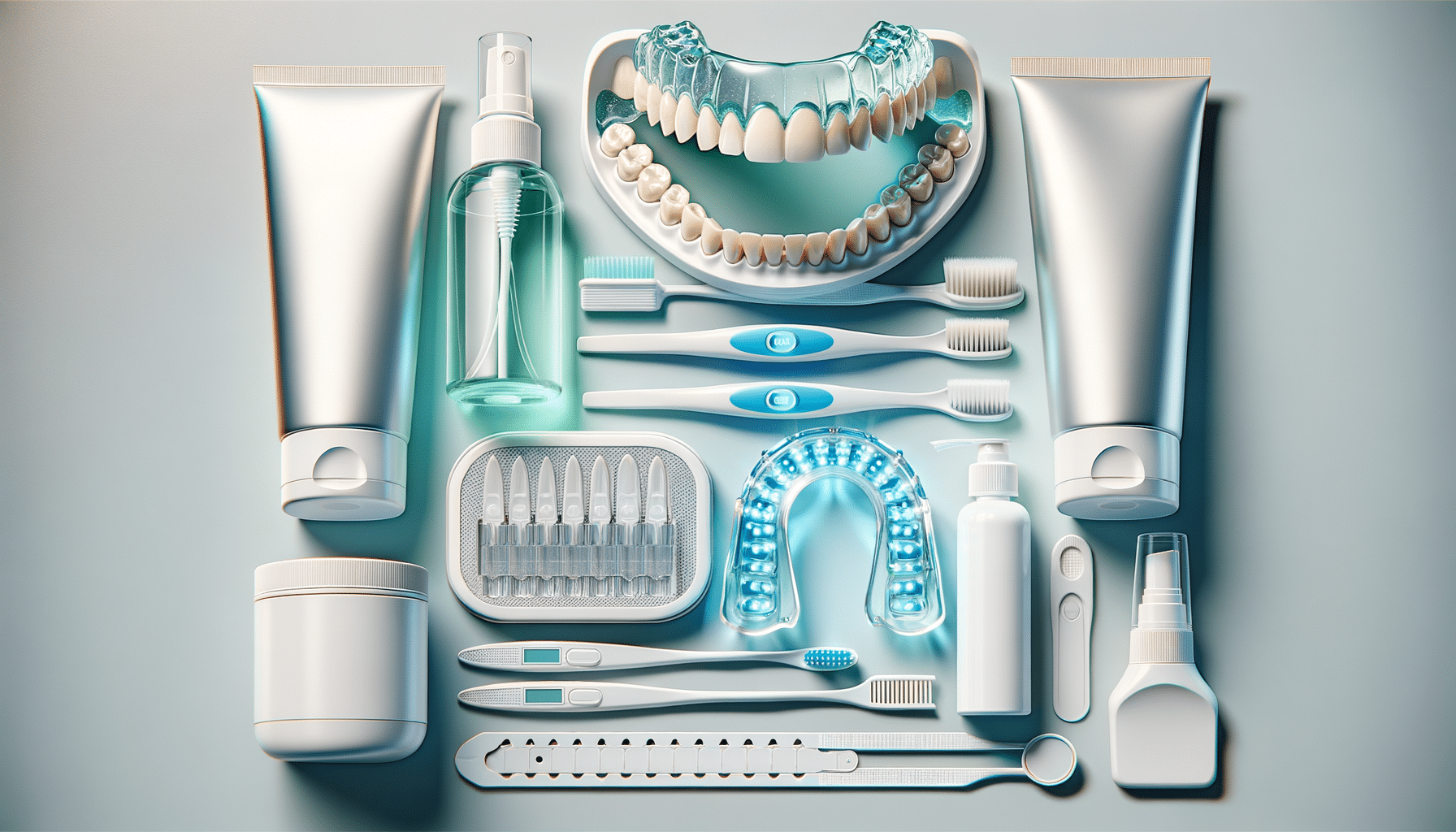
Exploring the World of Teeth Whitening Kits: A Comprehensive Guide
Introduction to Teeth Whitening Kits
In today’s world, a bright smile is often associated with confidence and success. Teeth whitening kits have emerged as a popular solution for those looking to enhance their smile without the expense of professional treatments. These kits offer a convenient and affordable way to achieve a whiter smile from the comfort of your home. Understanding the various types of kits available and their effectiveness is crucial for making an informed decision.
Teeth whitening kits generally come in various forms, including strips, gels, and LED light systems. Each type has its own set of advantages and considerations. While some kits promise quick results, others focus on gradual whitening to minimize sensitivity. It’s essential to choose a kit that aligns with your specific needs and dental health.
Types of Teeth Whitening Kits
Teeth whitening kits are available in several forms, each designed to cater to different preferences and needs. Here are some common types:
- Whitening Strips: These thin, flexible strips are coated with a whitening gel and are applied directly to the teeth. They are typically used for a set period, often twice daily for a couple of weeks.
- Whitening Gels: Gels are applied using a brush or a tray. They often contain peroxide, which helps to bleach the teeth and remove stains.
- LED Light Systems: These kits combine a whitening gel with an LED light that is believed to speed up the whitening process. The light is used to activate the ingredients in the gel, enhancing their effectiveness.
Each type of kit has its own pros and cons, and the choice largely depends on individual preferences, budget, and the desired speed of results.
How to Use Teeth Whitening Kits Effectively
Using teeth whitening kits effectively requires adherence to the instructions provided with the product. Here are some general tips for optimal results:
- Read the Instructions: Each kit comes with specific instructions that should be followed meticulously to avoid adverse effects.
- Maintain Oral Hygiene: Brush and floss your teeth before applying the whitening product to remove any plaque or debris that might hinder the whitening process.
- Avoid Staining Foods and Beverages: During the whitening process, it’s advisable to avoid foods and drinks that can stain your teeth, such as coffee, tea, and red wine.
- Monitor Sensitivity: Some users may experience increased sensitivity during the whitening process. If this occurs, consider using the kit less frequently or opting for a product designed for sensitive teeth.
Following these guidelines can help ensure that you achieve the desired whitening effect while minimizing potential side effects.
Benefits and Considerations of Using Teeth Whitening Kits
Teeth whitening kits offer several benefits, making them a popular choice for many individuals seeking a brighter smile. Some of these benefits include:
- Cost-Effectiveness: Compared to professional whitening treatments, at-home kits are generally more affordable, making them accessible to a wider audience.
- Convenience: These kits allow users to whiten their teeth at their own pace and in the comfort of their homes.
- Variety: With numerous options available, users can select a kit that suits their specific needs and preferences.
However, there are also considerations to keep in mind. For instance, not all kits are suitable for everyone, particularly those with dental restorations or certain oral health issues. It’s important to consult with a dental professional if you have concerns about using a whitening kit.
Conclusion: Choosing the Right Teeth Whitening Kit for You
Choosing the right teeth whitening kit involves understanding your specific needs and preferences, as well as considering factors like cost, convenience, and potential sensitivity. By exploring the different types of kits and following best practices for use, you can achieve a brighter smile that boosts your confidence.
Ultimately, the decision should be guided by your dental health and the results you wish to achieve. Consulting with a dental professional can provide additional insights and recommendations tailored to your individual needs.


